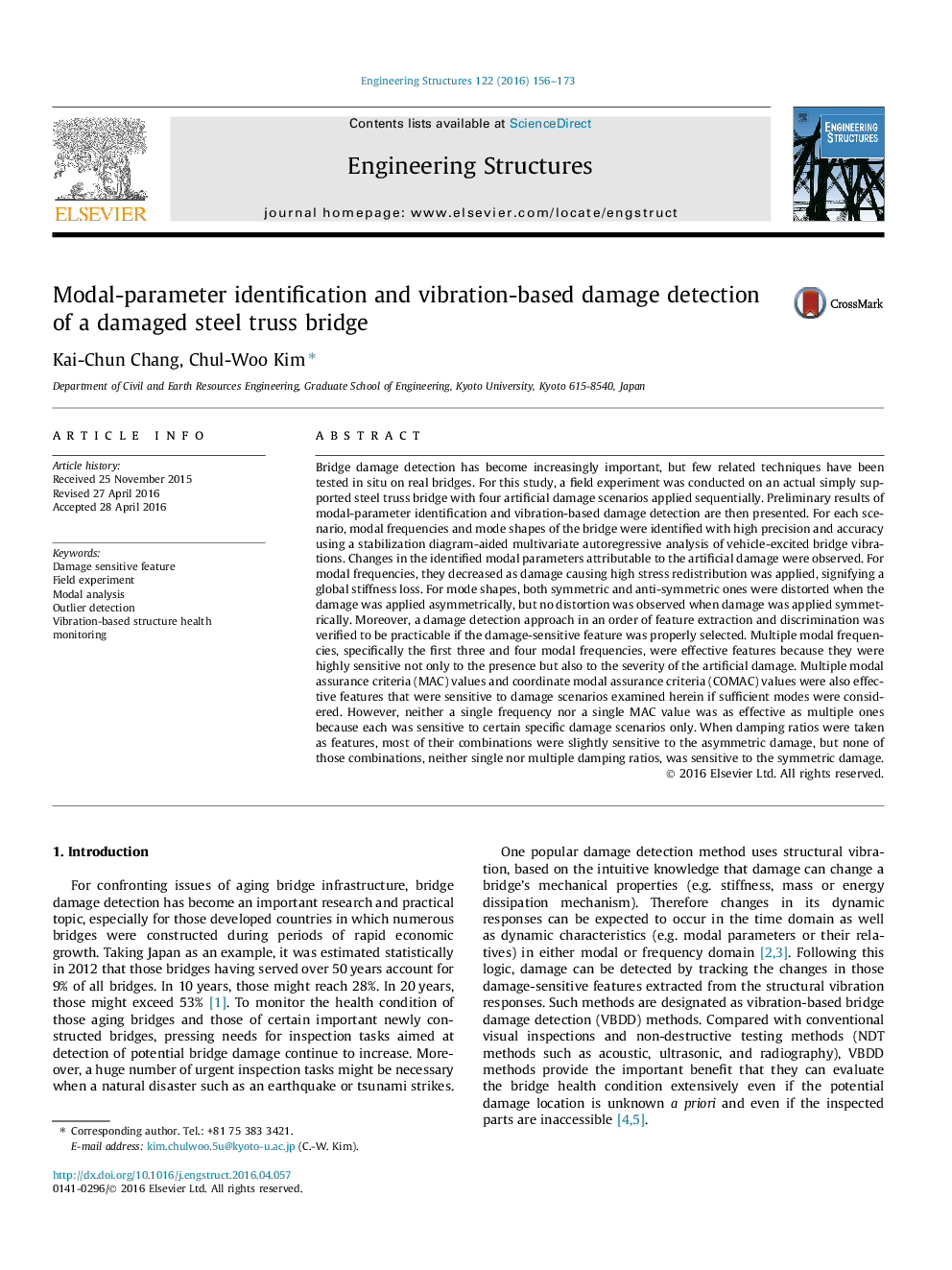| Article ID | Journal | Published Year | Pages | File Type |
|---|---|---|---|---|
| 6739894 | Engineering Structures | 2016 | 18 Pages |
Abstract
Bridge damage detection has become increasingly important, but few related techniques have been tested in situ on real bridges. For this study, a field experiment was conducted on an actual simply supported steel truss bridge with four artificial damage scenarios applied sequentially. Preliminary results of modal-parameter identification and vibration-based damage detection are then presented. For each scenario, modal frequencies and mode shapes of the bridge were identified with high precision and accuracy using a stabilization diagram-aided multivariate autoregressive analysis of vehicle-excited bridge vibrations. Changes in the identified modal parameters attributable to the artificial damage were observed. For modal frequencies, they decreased as damage causing high stress redistribution was applied, signifying a global stiffness loss. For mode shapes, both symmetric and anti-symmetric ones were distorted when the damage was applied asymmetrically, but no distortion was observed when damage was applied symmetrically. Moreover, a damage detection approach in an order of feature extraction and discrimination was verified to be practicable if the damage-sensitive feature was properly selected. Multiple modal frequencies, specifically the first three and four modal frequencies, were effective features because they were highly sensitive not only to the presence but also to the severity of the artificial damage. Multiple modal assurance criteria (MAC) values and coordinate modal assurance criteria (COMAC) values were also effective features that were sensitive to damage scenarios examined herein if sufficient modes were considered. However, neither a single frequency nor a single MAC value was as effective as multiple ones because each was sensitive to certain specific damage scenarios only. When damping ratios were taken as features, most of their combinations were slightly sensitive to the asymmetric damage, but none of those combinations, neither single nor multiple damping ratios, was sensitive to the symmetric damage.
Related Topics
Physical Sciences and Engineering
Earth and Planetary Sciences
Geotechnical Engineering and Engineering Geology
Authors
Kai-Chun Chang, Chul-Woo Kim,
